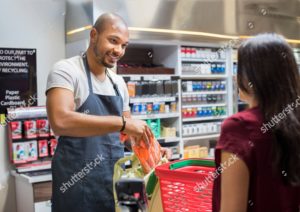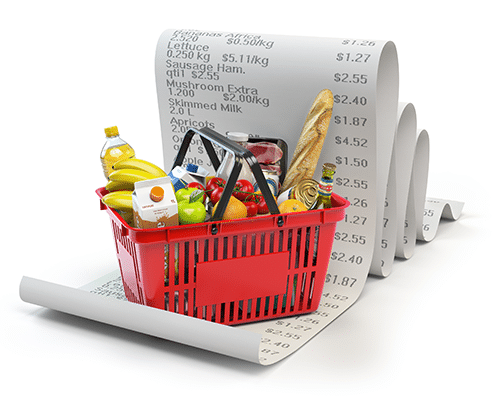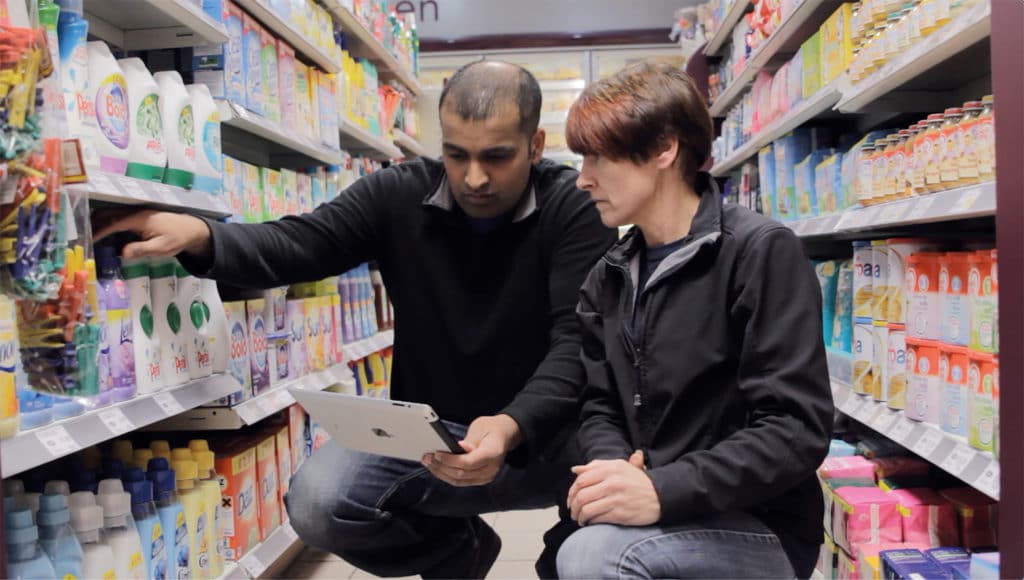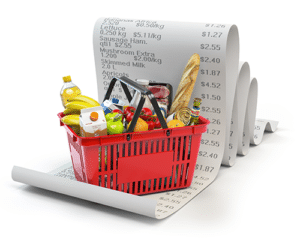With the unprecedented rise in the cost of living, driven by a steep rise in overheads, energy costs and food prices, not to mention increasing competition from online, discounters and multiples, there has never been a more important time for retailers to understand what their customers value and to ensure that day to day actions in-store reflect this.
What shoppers value will differ by store and by customer. For some, price is very important while others value their time more and therefore the convenience or speed of shop is a key factor in choosing a store. The more satisfied shoppers are with perceived value, the more frequently they will visit a store, which in turn will help drive customer loyalty.
So what do customers value?
1. Great Customer Service
Friendly and efficient service with a personal touch can help shoppers feel valued and create a pleasant shopping experience, which for some shoppers can be more important than price.
Store staff play a pivotal role in feeding back shoppers’ views and ensuring that a good level of service is maintained at all times. Store Managers can help by ensuring that there is clear communication to staff on what standards need to be achieved and basic training on how to deliver this. This includes simple things such as a friendly and helpful demeanor, greeting customers, handing shoppers a basket when their hands are full and asking, “Did you find what you were looking for?”
Great customer service can help make your store a destination for shoppers and stems from a good 
Good in-store service can also be supplemented with additional communication. Social Media for example, is a quick and effective way to interact with your customers and advise of any news, promotions or events taking place in-store or linked to your business. Engaging with customers outside of the store is imperative to driving loyalty.
“We have been active on Facebook for a few years now,” comments retailer Mandeep Singh. “We’ve gone from 291 members to over 22,000, increasing our members by over 4,500 during the first national lockdown of 2020. We also use Twitter and have grown those significantly too. It helps us to engage with our customers, build loyalty and through word of mouth, attract new customers. Plus it’s a quick and effective way to share our deals and promotions.”
“We’ve found it to be a great way to connect on a more personal level with our customers,” adds Retail Advisory Panel member Jonathan James.
For more information, see Using Social Media to promote your Business
2. Time Saving and Ease of shop
Time is increasingly being valued as a commodity, so for shoppers with a busy lifestyle, ease and speed of shop can influence store choice. Zoning your store to meet the type of Shopping Mission customers are on (i.e. the reasons they come into the store) makes it easy for them to find what they are looking for, enhances the shopping experience and saves valuable time. Identify the most important shopper mission for your store and make sure that this is in the most prominent area in your store layout. For example, if your store is in a busy urban area, maximise the ‘food-for-now’ mission.
Make sure customers can navigate through your store easily; wide aisles that are clutter free will help shoppers browse the fixtures and move freely. Once shoppers are at the right fixture, help them find what they are looking for through clear signage, POS and utilising category anchors with well-known brands within specific categories e.g. Hellmann’s Mayonnaise, Heinz Tomato Ketchup.
Extra hand baskets should be situated throughout the store so that shoppers do not have to walk back to the front of that store once their hands are full.
As half of all shopping time can be spent queuing to pay, make sure that all staff are till trained to allow extra tills to be opened at busy times. For particularly busy stores, contactless payment and self-scan checkouts can help speed up transaction times. Technology has a key role to play in making shopping even quicker and easier and could even enable some stores to provide a ‘click and collect’ service.
See Shopper Missions, Good Merchandising – Good for Customers, The Importance of Technology in Convenience Stores for more detailed information.
3. Good Ranging and Product Availability
When asked, convenience shoppers consistently state ‘a good range of products’ and ‘product availability’ as being important to them. If customers cannot find what they’re looking for because it is not listed or is out of stock, most will go elsewhere in the future.
Understanding your customers’ shopping habits and the local competition will help you determine a relevant range for your store and could even identify opportunities for a unique range of products that become a footfall driver.
Following planograms from a trusted source such as Partners for Growth will help ensure that the core range of bestselling products have the right space in store to reduce the possibility of ‘out of stocks’.
“We look at each category and adjacencies and the finer details,” comments Ramesh Shingadia. “We use Londis and Partners for Growth planograms – it’s invaluable, impartial advice and the guidelines on merchandising and display on the websites are really good.”
See Get the Ranging Right… Boost Profits for more detailed information
4. Community Involvement
It is not only what you do in-store that counts but also how you engage with your customers outside. For certain store locations playing a key role in the local community can provide some differentiation and drive shopper loyalty. Supporting a local business that acts responsibly and makes a positive contribution to the local area can help shoppers feel part of the local community.
Whether it be sponsoring the local football team, organising local events or even fundraising for local charities, making your store a key part of the community will pay dividends. If you have the space, (either on the shop floor or in additional office space) you could act as a ‘community hub’ for local groups to meet.
“Getting involved in the community takes your customer engagement to the next level. It’s something we can do better than the big supermarkets. People really appreciate you putting something back into the community, they talk to you more and they’re more likely to support you. It also makes the job more enjoyable, as customers like coming in and we like seeing them. And, long term, it shows in profits” comments Mandeep Singh of Singh’s Premier in Sheffield.
See Engaging your local community for more information.
5. Price still has its place!
But price still does have a place in demonstrating value to shoppers, particularly given the dramatic rise in energy, fuel and food prices is causing many shoppers to feel that their weekly food budget is being squeezed, particularly as the cost of energy hits households. What’s more, people are making cuts and saving where possible, in case of recession and job losses, so its important to balance the above elements of great customer service, ease of shop, good ranging and availability and community involvement, with an assurance to your shoppers that your store still offers them great value. This can be achieved through price mark packs on recognisable brands, smaller product sizes for reduced available spend and affordable meal fillers. Source See our article on Delivering Value.
Even though retailers face tough competition, there are many ways to encourage customer visits and encourage spend in-store. Through regular re-assessment of the business, updating of the range and fulfilling customer demands, retailers can ensure that their business remains successful. So why not find out what your customers want through a quick customer survey and see where their feedback takes you?





13 Responses
4ldxse
217zm8
5usl6d
i1cs1z
cltocc
47yq5x
nxyy99
u9zq4p
kqcvp7
1y8xbi
4ulk1t
gvrys5
0dq7oe